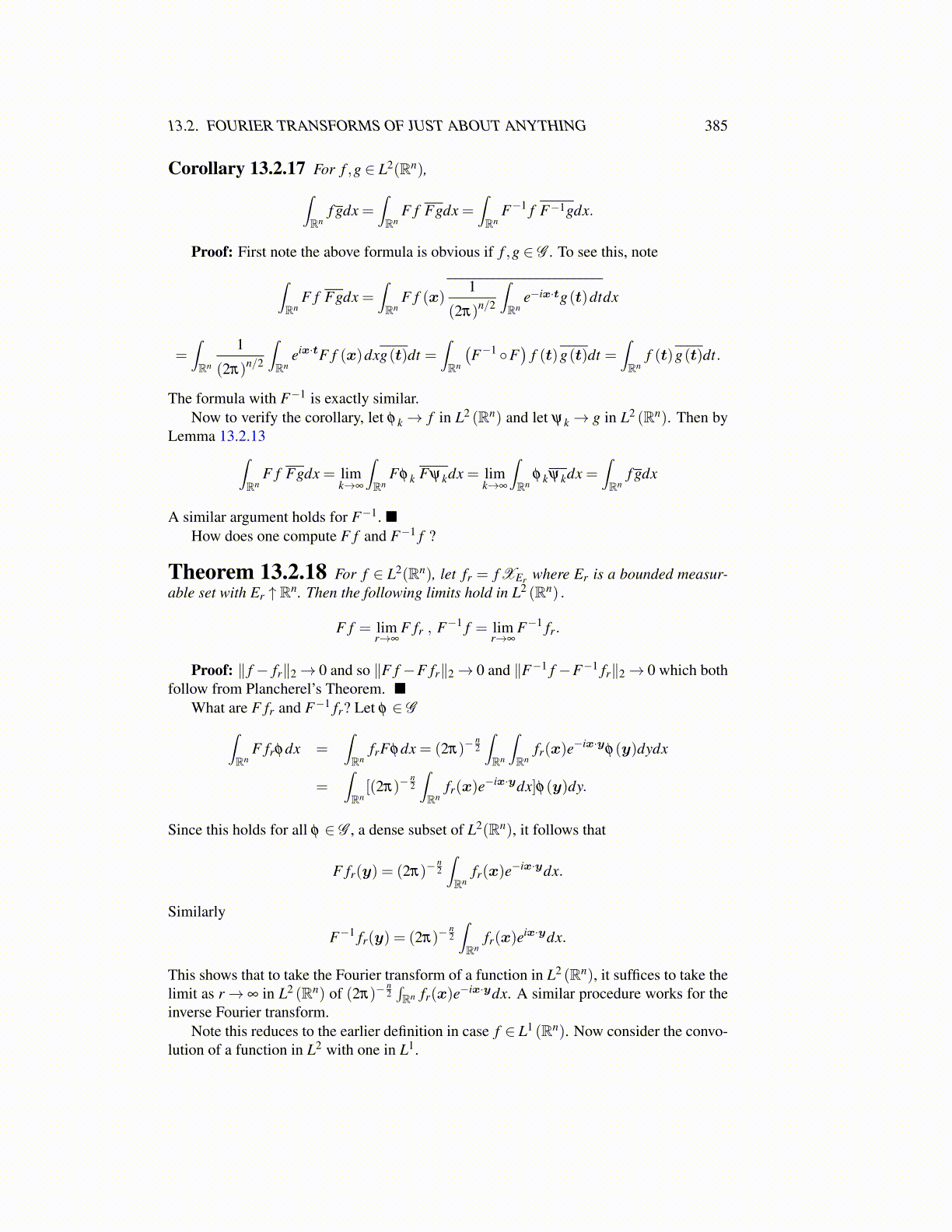
13.2. FOURIER TRANSFORMS OF JUST ABOUT ANYTHING 385
Corollary 13.2.17 For f ,g ∈ L2(Rn),∫Rn
f gdx =∫Rn
F f Fgdx =∫Rn
F−1 f F−1gdx.
Proof: First note the above formula is obvious if f ,g ∈ G . To see this, note∫Rn
F f Fgdx =∫Rn
F f (x)1
(2π)n/2
∫Rn
e−ix·tg(t)dtdx
=∫Rn
1
(2π)n/2
∫Rn
eix·tF f (x)dxg(t)dt =∫Rn
(F−1 ◦F
)f (t)g(t)dt =
∫Rn
f (t)g(t)dt.
The formula with F−1 is exactly similar.Now to verify the corollary, let φ k→ f in L2 (Rn) and let ψk→ g in L2 (Rn). Then by
Lemma 13.2.13∫Rn
F f Fgdx = limk→∞
∫Rn
Fφ k Fψkdx = limk→∞
∫Rn
φ kψkdx =∫Rn
f gdx
A similar argument holds for F−1. ■How does one compute F f and F−1 f ?
Theorem 13.2.18 For f ∈ L2(Rn), let fr = f XEr where Er is a bounded measur-able set with Er ↑ Rn. Then the following limits hold in L2 (Rn) .
F f = limr→∞
F fr , F−1 f = limr→∞
F−1 fr.
Proof: ∥ f − fr∥2→ 0 and so ∥F f −F fr∥2→ 0 and ∥F−1 f −F−1 fr∥2→ 0 which bothfollow from Plancherel’s Theorem. ■
What are F fr and F−1 fr? Let φ ∈ G∫Rn
F frφdx =∫Rn
frFφdx = (2π)−n2
∫Rn
∫Rn
fr(x)e−ix·yφ(y)dydx
=∫Rn[(2π)−
n2
∫Rn
fr(x)e−ix·ydx]φ(y)dy.
Since this holds for all φ ∈ G , a dense subset of L2(Rn), it follows that
F fr(y) = (2π)−n2
∫Rn
fr(x)e−ix·ydx.
Similarly
F−1 fr(y) = (2π)−n2
∫Rn
fr(x)eix·ydx.
This shows that to take the Fourier transform of a function in L2 (Rn), it suffices to take thelimit as r→ ∞ in L2 (Rn) of (2π)−
n2∫Rn fr(x)e−ix·ydx. A similar procedure works for the
inverse Fourier transform.Note this reduces to the earlier definition in case f ∈ L1 (Rn). Now consider the convo-
lution of a function in L2 with one in L1.